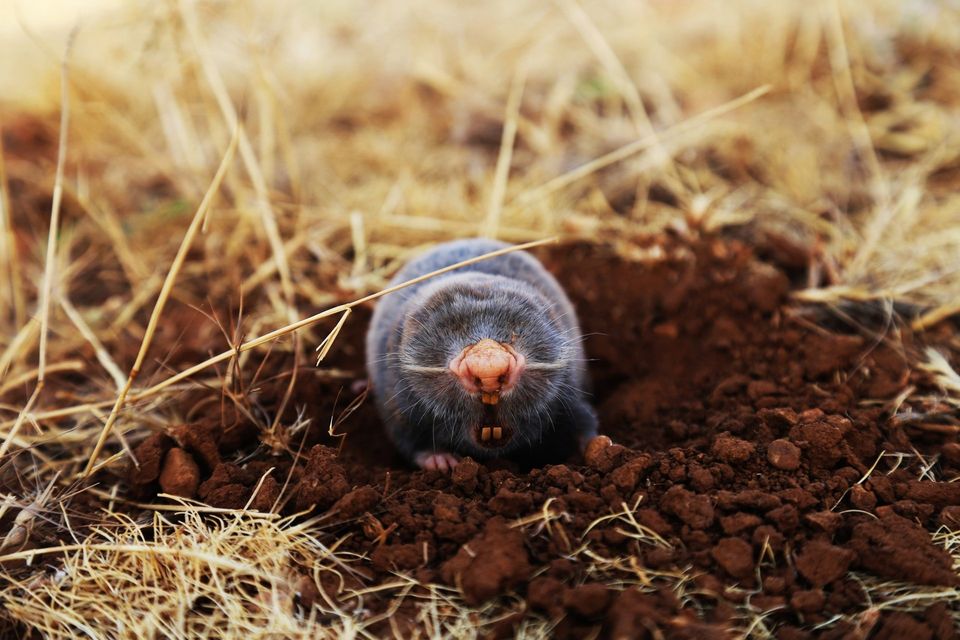Moles, Voles, and Shrews - What's the Difference?
One thing they have in common is they can be pests!
Most people can recognize a mouse darting through the grass, given the small size and long tail we all know. And the bold stripes of a chipmunk are also easy to spot.
But when you start to see other short-tailed rodent pests, it can get confusing and less familiar. In particular, do you know the difference between a mole and a vole? And what about the tiny shrew? Dealing with rodents effectively starts with knowing exactly what type of animal you are trying to get rid of.
Moles
Though the names suggest a lot of similarity, its not that hard to tell moles and voles apart once you take a good look at them. Moles spend almost all of their time underground digging tunnels, and they have adapted to this life with large front feet with heavy wide claws for digging. Their eyes are very small and nearly invisible in their dense fur. A large and fleshy pink nose is the most prominent feature on a mole's face. Most moles will be between 4 and 6 inches long.
They are insectivores, eating all sorts of insects as well as worms. Generally harmless, their tunneling can ruin a yard or garden.
Voles
Voles look a bit like mice though they are larger (between 4 and 6 inches in length, like a mole), and have a rounder body shape with much smaller eyes. Their tails are shorter as well. Without the heavy paddle-like front paws, it's easy to tell them apart from moles.
Most voles are herbivores, and will eat various seeds and plants. This makes them a bit more of a problem around the house (if they get inside) or just through the garden. They also tunnel like moles but will spend a lot more of their time on the surface grazing and looking for food. In the winter months, they can kill off perennials by eating the roots when no other food is available for them.
Shrews
Compared to moles and voles, shrews are much smaller (3 inches) and can be mistaken for mice. They have a long nose which is their most distinctive feature once you get a close look.
Shrews can be seen in the yard darting in and out of tunnels, but they do not dig tunnels for themselves. They just use existing runs that have been created by moles or voles. That is important to know because getting rid of moles or voles in your yard, without dealing with the tunnels is just an invitation for a new population of shrews to move in. Make sure you block them up.
Like moles, shrews are hunting for insects when they look for food and aren't going to be pillaging from your garden. Since they are not doing any digging either, they are one of the few rodents that aren't doing much harm in the yard.
Getting Rid of Moles, Voles, and Shrews
For any of these pests, traps are an option though you'll need to know which animal is which so you can bait the traps properly. Alternatively, you can use a granular product that repels them all by scent. Apply liberally around tunnels entrances to encourage them to move out.
Critter Repellent All Natural Animal Repellent Blog













